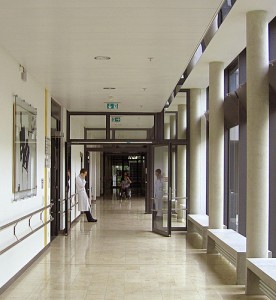How Safe Is Your Hospital?
 Wouldn’t you want to know just how safe your hospital is before you’re admitted for a procedure?
Wouldn’t you want to know just how safe your hospital is before you’re admitted for a procedure?
How about if I told you that preventable medical errors were responsible for over 180,000 deaths a year in our nation’s hospitals? I’m talking about preventable surgical complications, blood infections, wrong-site surgery, materials left in your body after surgery, bedsores, etc. Now I should have your attention.
The annual HealthGrades Patient Safety in American Hospitals study found that patients have a 46% lower risk of experiencing a patient safety incident at a top-rated hospital compared to a poorly rated hospital. The study analyzed 40 million Medicare patient records from 2007 to 2009.
HealthGrades is America’s most trusted, independent source of physician information and hospital quality outcomes. HealthGrades’ online properties are the nation’s leading destination for physician search and empower more than 200 million consumers annually to make informed health care decisions.
“HealthGrades commends the efforts of those hospitals that are focused on providing consistent, safe and effective medical care,” said Rick May, MD, HealthGrades vice president of clinical quality services and co-author of the study. “But the fact remains that there are huge, life-and-death consequences associated with where a patient chooses to seek hospital care. Until we bridge that gap, HealthGrades urges patients to research the patient safety ratings of hospitals in their community and know what steps they can take to protect themselves from error before being admitted.”
Key findings of the HealthGrades Patient Safety in American Hospitals study included:
- Medicare patients treated at hospitals recognized with a HealthGrades Patient Safety Excellence Award had, on average, a 46% lower risk of experiencing a medical error compared to patients treated at bottom-ranked hospitals.
- Patients treated at top-ranking hospitals for patient safety had a 30% lower risk of experiencing a central-line bloodstream infection and a nearly 39% lower risk of post-surgical sepsis, another type of hospital-acquired bloodstream infection.
- Four patient safety indicators (death among surgical inpatients with serious treatable complications, pressure ulcer, post-operative respiratory failure, and post-operative sepsis) accounted for 68.51% of all patient safety events during the three years analyzed.
- The 13 patient safety events studied were associated with $7.3 billion of excess cost, which equates to an additional $181.17 per Medicare patient hospitalization.
Preventable medical errors are so pervasive and costly that the federal government has proposed linking incentive-based hospital compensation to four of the Patient Safety Indicators listed above, starting in 2014.
The Centers for Medicare and Medicaid Services are currently developing a 10-year, $70 billion plan aimed at reducing hospital-acquired infections.
For safety and peace of mind, before you go to the hospital, go to healthgrades.com to check on how well your hospital performs and go to one that has a safe record.
References:
Jeff Kreisberg is a patient advocate, educator, scientist author of the book “Taking Control of Your Healthcare,” and, until his retirement, a professor at the University of Texas Health Science Center in San Antonio, Texas. Jeff also blogs regularly on health issues on his website, Taking Control of Your Healthcare. Follow him on Twitter: @kreisberg.
[Photo By digital cat]
